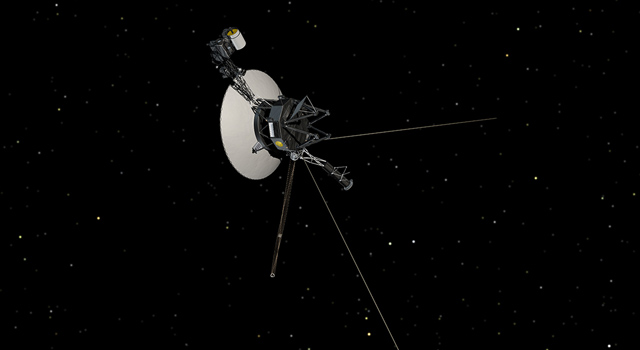News | January 16, 1986
Six Addition Uranus Moons Found

NASA's Voyager 2 spacecraft has found six additional small moons in orbit around the planet Uranus, doubling the number of Uranian satellites known.
Scientists on the Voyager imaging team found the moons in long-exposure images returned by the spacecraft over the past two weeks. The exposures were designed to search for new moons or rings. Voyager 2, which was launched in 1977, will fly by Uranus on Jan. 24, 1986.
To date, seven new Uranian moons have been found around the distant planet in images returned by the spacecraft.
Like 1985U1, the moon discovered by Voyager scientists in late December, the new satellites are all in orbits between the outermost known ring (the epsilon ring) and the moon Miranda.
(The moons are temporarily called by designations which state the year in which they were discovered (1986), the planet with which they are associated (U, for Uranus), and the order in which they were discovered during the year.)
The new satellites are:
- 1986U1, about 50 kilometers (30 miles) in diameter, orbiting at distance of 66,090 kilometers (41,070 miles) from the center of the planet every 12 hours, 19 minutes. It was discovered in images returned Jan. 3.
- 1986U2, about 40 kilometers (25 miles) in diameter, orbiting at distance of 64,350 kilometers (39,990 miles) every 11 hours, 50 minutes. It was also found in images returned Jan. 3.
- 1986U3, about 40 kilometers (25 miles) in diameter, orbiting at distance of 61,750 kilometers (38,370 miles) every 11 hours, 8 minutes. It was found Jan. 9.
- 1986U4, about 30 kilometers (20 miles) in diameter, orbiting at distance of 69,920 kilometers (43,450 miles) every 13 hours, 24 minutes. It was discovered Jan. 13.
- 1986U5, about 30 kilometers (20 miles) in diameter, orbiting at distance of about 75,100 kilometers (46,700 miles) every 14 hours, 56 minutes. It was found Jan. 13.
- 1986U6, about 30 kilometers (20 miles) in diameter, orbiting at distance of about 62,700 kilometers (39,000 miles) every 11 hours, 24 minutes. It was also found in data returned Jan. 13.
Voyager scientists expect to find still more Uranian satellites, both in and around the rings, in images returned by the spacecraft over the next two weeks.
The Voyager project is managed for NASA by the Jet Propulsion Laboratory, Pasadena, Calif.
